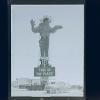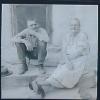Dorothea Lange
Supported by government programs and new picture magazines like LIFE, Dorothea Lange and other photographers of the 1930s and '40s created an indelible record of everyday life in difficult times. The Great Depression caused many photographers to consider the camera as an instrument of social change. Foremost among this group was Berkeley photographer Dorothea Lange, whose intimate pictures of people in distress were driven by a deep personal empathy. She continued her intensely personal work after the Depression, creating series on the forced relocation of Japanese Americans during World War II, Irish country life, and postwar suburban California, among many other projects. The Oakland Museum of California houses Lange’s personal archive, a gift from the artist that includes 25,000 negatives, 6,000 vintage prints, field notes, and personal memorabilia. Curators and researchers from around the world visit the Museum to access the Lange collection.
View results as Grid View results as List Browse Full Collection Advanced Search
|
1953
This is one of a strip of two negatives cataloged as 67.137.53161.1 and .2 |
1953
This is one of a strip of two negatives cataloged as 67.137.53205.9 and .10 |
|
1953
This is one of a strip of two negatives cataloged as 67.137.53205.3 and .4 |
1953
Handwritten on negative envelope in pencil: "Utah '53 AC Man Gunlock, Jake Jones head" |
|
n.d.
Written on back of negative envelope: ""This is the Place" - sign of restaurant-hotel complex on transcontinental highway approaching Salt Lake City. Compare with Salt Lake City statue of... |
1953
Handwritten on negative envelope in pencil: "Utah '53 AC Man Gunlock, Jake Jones head" This is one of a strip of two negatives cataloged as 67.137.53139.4 and .5 |
|
Jul-54
Handwritten on negative envelope: "July `54 Rebecca Chambers, aged 76, at 250 Excelsior Lane, Sausalito during a visit. This is the breed. The family historian. A.C. Woman. An old native... |
1952
|
|
July '54
|









